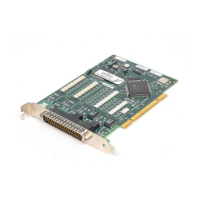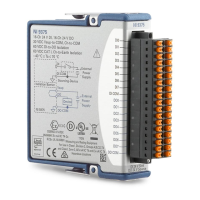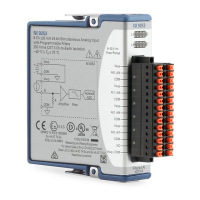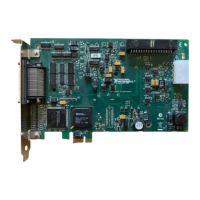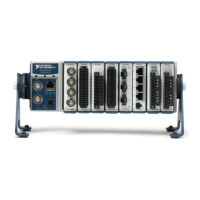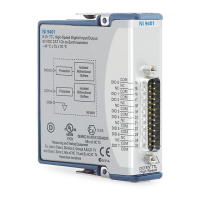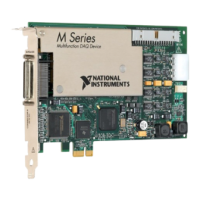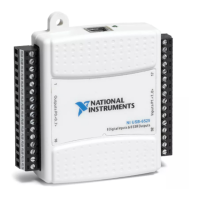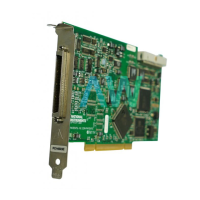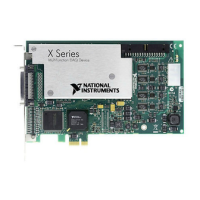© National Instruments 11-1 X Series User Manual
11
Triggering
A trigger is a signal that causes an action, such as starting or stopping the
acquisition of data. When you configure a trigger, you must decide how
you want to produce the trigger and the action you want the trigger to cause.
All X Series devices support internal software triggering, as well as
external digital triggering. Some devices also support analog triggering.
For information about the different actions triggers can perform for each
sub-system of the device, refer to the following sections:
• The Analog Input Triggering section of Chapter 4, Analog Input
• The Analog Output Triggering section of Chapter 5, Analog Output
• The Counter Triggering section of Chapter 7, Counters
Note Not all X Series devices support analog triggering. For more information about
triggering compatibility, refer to the specifications document for your device.
Triggering with a Digital Source
Your DAQ device can generate a trigger on a digital signal. You must
specify a source and an edge. The digital source can be any of the PFI,
RTSI, or PXI_STAR signals.
The edge can be either the rising edge or falling edge of the digital signal.
A rising edge is a transition from a low logic level to a high logic level.
A falling edge is a high-to-low transition.
Figure 11-1 shows a falling-edge trigger.
Figure 11-1. Falling-Edge Trigger
5 V
0 V
Falling Edge Initiates Acquisition
Digital Trigger
Artisan Technology Group - Quality Instrumentation ... Guaranteed | (888) 88-SOURCE | www.artisantg.com

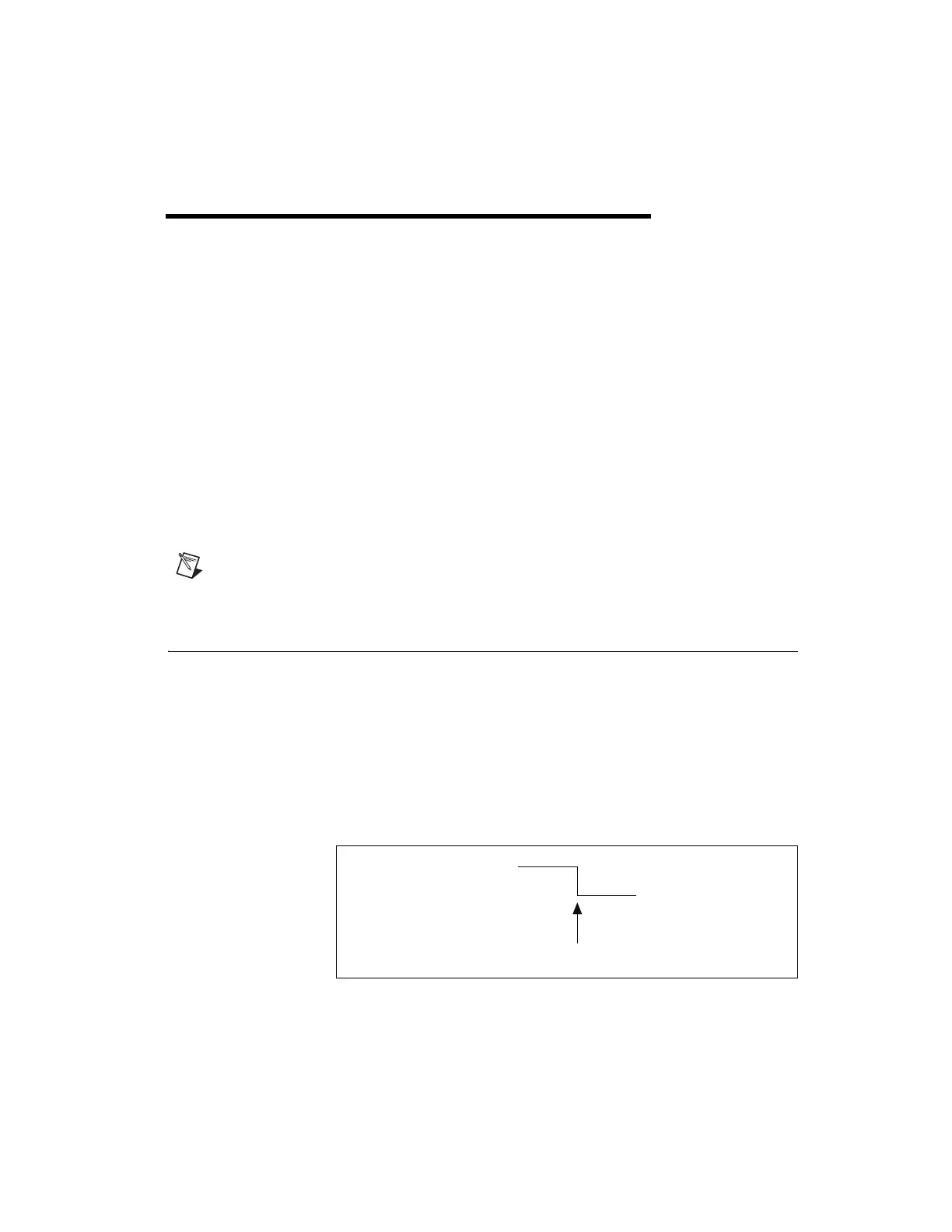